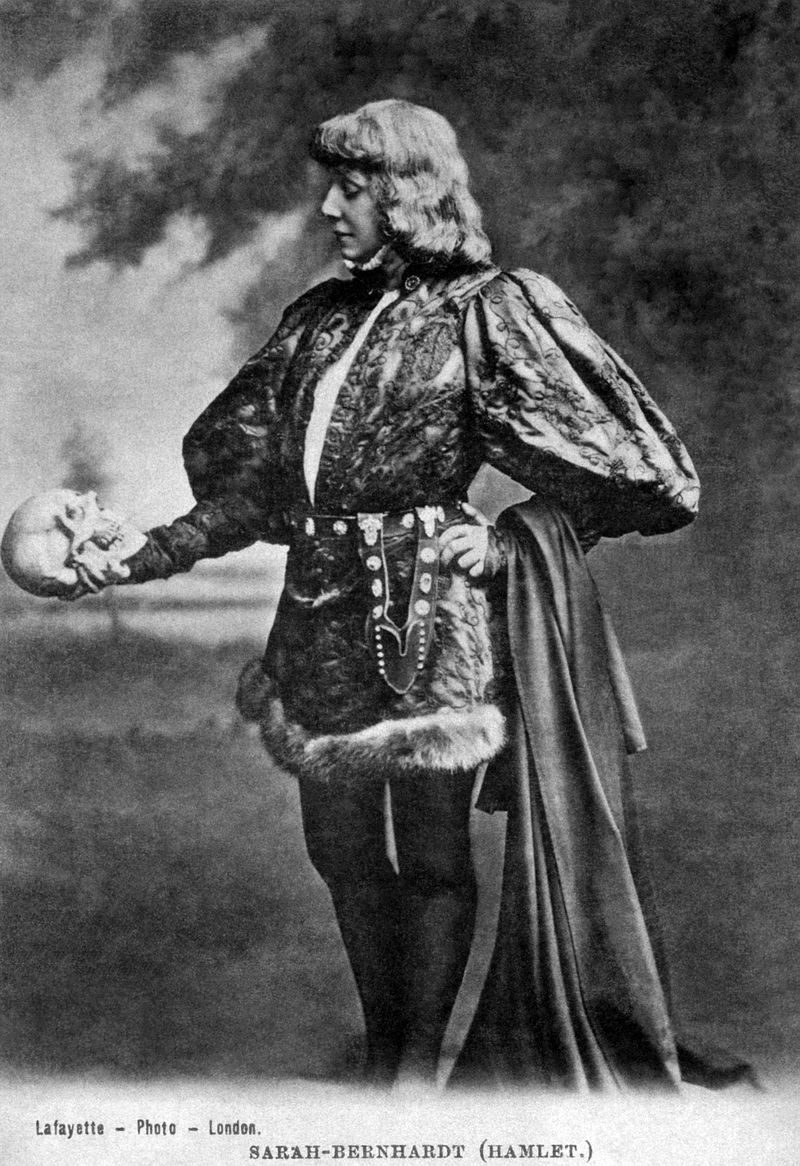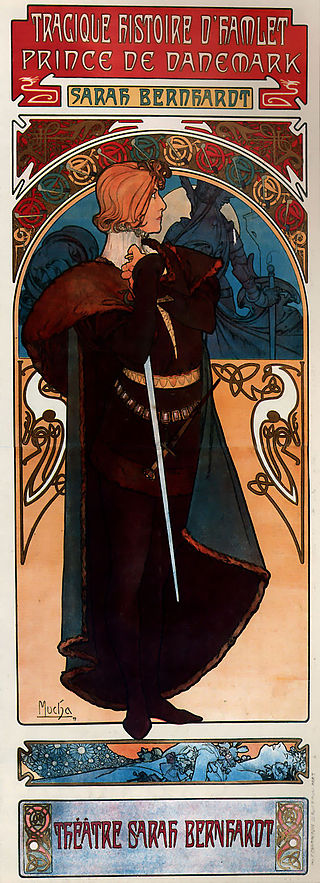Highlighting Sarah Bernhardt

This month, we are highlighting women in theatre from our past and in our present. Women have long been trailblazers in the world of theatre and while these posts only scrape the surface, we hope you will take the time to learn more about these radical women and the many others who continue to push the boundaries of classical theatre.
For our first post, we are highlighting the French actress Sarah Bernhardt.
Sarah Bernhardt, or “Divine Sarah” as she was later known, was in a class all her own. She became one of the first international stage stars, touring the world over. Famously, Mark Twain penned for the program of her 1912–1913 American tour:
“There are five types of actresses: bad actresses, fair actresses, good actresses, great actresses-and then there is Sarah Bernhardt.”
Born in 1844 as Henriette Rosine Bernard to a Dutch-Jewish courtesan mother, she was the eldest of three daughters. She grew up studying in a convent, bound for a life of religious vocation, but by age sixteen she was set for a career in the theatre. For two years, Bernhardt trained at the Conservatoire de Musique et Déclamation. Her first professional stage appearance was in 1862 as the title role in Racine’s Iphigenia. From there, she received smaller roles before signing with the Odéon Theatre where she was cast as Anna Damby in Alexandre Dumas’ Kean in 1868. Bernhardt’s performance received critical acclaim.
During the same year, Bernhardt formed her connection with the work of Shakespeare. She starred in King Lear as Cordelia (also at the Odéon). Although she began with traditional femimine roles, she is most known for her turn in masculine roles, or travesti roles. In 1899, at the age of 55, she took on the role of Hamlet in a French language adaptation. Her performance was so well received that she reprised the role in London and Stratford at the Shakespeare Memorial Theater. What makes Bernhardt’s take on Hamlet so unique is that her performance aligned with the early stages of film making and it was able to be captured; the footage is available online to this very day.
Through this captured performance, contemporary audiences are able to understand what was so captivating about Berhardt. Physicality was a major part of her allure, and it was said that the force within her eyes could drain the emotion from her audiences. Her voice was often described as “lyrical” and you can hear recordings of her online as well. Another important draw to her performance was her emotionality. Biographer Robert Gottlieb remarked that Bernhardt had “[a] willingness to expose her emotions, to impose them to her audience.”
These qualities were enough of a draw for audiences, as Bernhardt performed some 70 roles in 125 productions. She became the muse of Oscar Wilde for his final theatrical work, Salome; the work was composed in French just for her. However, she was not without her critics. Both Anton Chekov and George Bernard Shaw made remarks about their distaste for her style of performance. Still, she became one of the richest and most publicized actresses of her day, with an estimated net worth of 3.5 million francs.
In the twilight of her career, Bernhardt performed for soldiers during World War I and toured around the world. In total, she toured America nine times during her life. Bernhardt died on March 26 1923. Her Parisian funeral procession drew in large crowds, all seeking to remember one of the finest actresses of the 19th century.


